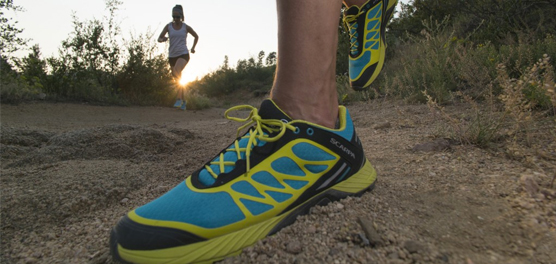Free shipping! Get free ground shipping on orders over $99 to the lower 48 states. Enter code FREE99
at checkout.


Photo:
Hiking a mountain, running a trail, approaching a climb—these activities seem pretty similar, right? The
thought of needing a different shoe for each one sounds crazy, until you picture this scenario…
Your feet are slipping out from under you, all control of your upward motion is gone and no matter how hard you press your toenails into the sole of your shoe, nothing will stop you from sliding down the rock. You are now on all fours, attempting to use your fingertips to grip the granite beneath you, but to no avail. Keeping up with your crew? Consider that out of the question, thanks to your poor footwear choice for today’s approach.
Have you ever been in this situation? Not realizing that you chose the wrong shoes until it was too late to change them? This mistake can easily prevent you from finishing your objective and accomplishing your goal. The type of footwear you don can be an underrated decision. Tread size, rubber type, cushioning, and support all can have a major impact on performance. We’re here to help you decipher which shoes to wear when and why.
Light hiking shoes are built for moving fast over variable alpine terrain. Imagine wearing this type of shoe during the summer on a groomed dirt trail, with just a few rocks and roots to navigate. The soles on these shoes will have grippy rubber for outstanding traction, a reinforced heal and toe for rock protection, and a lightweight, breathable upper that dries fast while helping your feet stay cool. Check out the Epic Lite if you’re looking for a do-it- all trail performer.
Obviously trail running shoes are designed for running on trails. But how are they different from a hiking shoe and why can’t you just wear your regular running shoes? Trail runners differ from hiking shoes in that they normally weigh less, have increased flexibility, and usually contain a plusher cushioning system that absorbs the impact of running. These shoes are meant to move light and fast. They probably won’t give you the support you need to haul a heavy pack long distances, but they will give you the traction on slippery surfaces and the protection from sharp objects that your average running shoe can’t provide. The SCARPA Spin is the perfect choice for those who want both support and simplicity on rugged trails and craggy ridgelines.
As for approach shoes, isn’t “approach” just a fancy term for hiking to a crag? If so, why can’t you just wear your hiking shoes? The problem with that is a climbing approach can include more technical maneuvers and even some scrambling that you might not encounter on your average hike. Approach shoes are soled in the same rubber as climbing shoes. This sticky rubber extends around the toe box and usually wraps the back of the heel to give you more confidence that your feet will stay put on rocky terrain. Consider the Iguana as your secret weapon for long, difficult routes and sketchy, no-fall- zone approaches.
Photos By: Kevin Ziechmann
Featured Product

Related Stories

